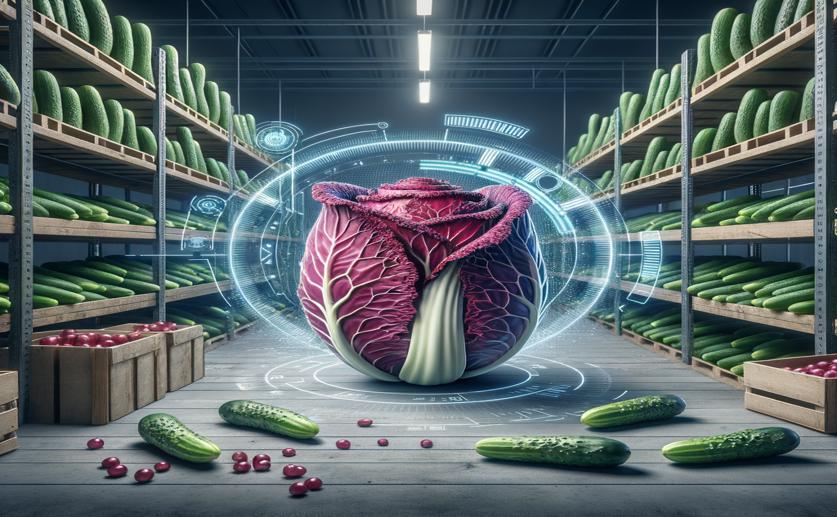
Red Cabbage Film as an Eco-Friendly Sensor for Food Safety in Stored Cucumbers
Jim Crocker
3rd July, 2024

Image Source: Natural Science News, 2024
Key Findings
- The study, conducted in Egypt, developed a biopolymer film using red cabbage extract (RCE) and bacterial cellulose (BC) to detect contamination and gamma radiation in cucumbers
- The RCE-BC film changes color in response to pH variations, effectively indicating bacterial contamination by correlating color change with bacterial growth
- The film also detects gamma radiation exposure, with color intensity decreasing as radiation levels increase, making it useful for monitoring food preservation
VegetablesSustainabilityBiochem
References
Main Study
1) Red cabbage extract immobilized in bacterial cellulose film as an eco-friendly sensor to monitor microbial contamination and gamma irradiation of stored cucumbers
Published 2nd July, 2024
https://doi.org/10.1007/s11274-024-04047-2
Related Studies
2) Application of Red Cabbage Anthocyanins as pH-Sensitive Pigments in Smart Food Packaging and Sensors.
3) Bacterial Cellulose and Its Applications.
4) Fabrication of halochromic smart films by immobilizing red cabbage anthocyanins into chitosan/oxidized-chitin nanocrystals composites for real-time hairtail and shrimp freshness monitoring.



 21st June, 2024 | Jim Crocker
21st June, 2024 | Jim Crocker